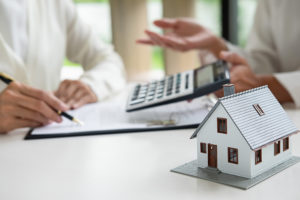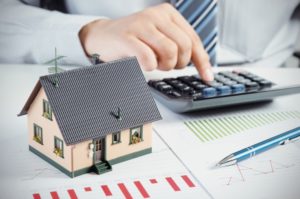Requirements for future property owners
Obviously, anyone who wants to build a house or buy a condominium needs money. In addition, sufficient equity must be available, whereby around 20 percent of the purchase price can be assumed. This is exactly where the first problem lies, because the bank's valuation does not have to correspond to the purchase price of the property. That means: the demand for real estate is high, the interest level is low. The price has risen enormously recently, with many sellers wanting to sell their buildings at exorbitant prices. The bank, however, sees the matter in the long term and would like to secure the mortgage loan for a long time. She will evaluate the object separately and sometimes comes to different values than the seller. The resulting differences between the purchase price and the determined lending value of the bank must be secured by the buyer's own funds. However, these are often not taken into account in the planning.
An example: The property is to cost CHF 800,000 and equity of CHF 200,000 is available. In order to calculate the affordability of the property, the purchase price, equity and income play an important role. Affordability is calculated using imputed interest rates that are significantly higher than the normal mortgage rate. They are located at around five percent, although the individual banks differ slightly on this point. The reason for this high value is very simple: if interest rates rise again, the financing is still secured because it was calculated from the outset on the basis of the less favorable interest rate. The bank now finances a maximum of 80 percent of the purchase price and divides the amount between two mortgages. The first amounts to more than 66 percent of the total, the second to a maximum of 14 percent. The second mortgage has to be repaid within 15 years, whereby the latest date of entry into retirement age is shown.
In addition, the ancillary costs and the costs incurred for maintaining the property must be included. The bank will assume around one percent of the purchase price.
It is now assumed that the monthly burden of interest, amortization and ancillary costs should not exceed a third of the gross income of the borrower. In the above example, this would have to earn around 10,700 francs a month in order to be able to make all payments if the imputed interest rate of five percent is calculated. This shows that a mistake made by many willing borrowers is to underestimate the monthly burden. The demands on borrowers are high!
Avoid typical mistakes
For some people, a house or condo is just a way to live. Such a property is usually associated with emotions and quite a few people literally fall in love with a house that they then absolutely have to buy. But one of the worst mistakes is to give in to that infatuation and buy a house that you can't afford. The threat of over-indebtedness quickly kills love!
Another mistake is not to make provisions. A mortgage is taken out for a very long period of time and it is almost certain that interest rates will go up at some point. Anyone who has received the loan should therefore always make sure to set up regular provisions in order to be able to absorb any increases in interest rates. So you can look more calmly into the future!
In order to get the necessary equity, another mistake is often made: Money is withdrawn from the pension fund, which consequently offers less performance. Not really a problem, but sooner or later it must be possible to close the gaps that have arisen. Otherwise, the money would be invested in the dream home now, but the money would be missing later when you draw your pension. And then maybe the sale of your home is threatened because it has simply become unaffordable.
Conclusion: The biggest mistakes are in the financing
The worst mistakes a builder or homebuyer can make are planning their financing. This is usually approached too tightly, so that the equity capital actually required is not available. Or the credit burden of a maximum of one third of the gross income does not fit, more money is needed for the mortgage. This in turn leads to frustration and, in the worst case, to insolvency for all other payment obligations.







